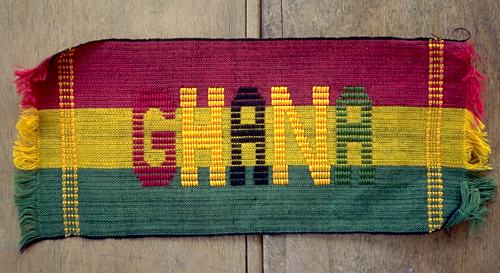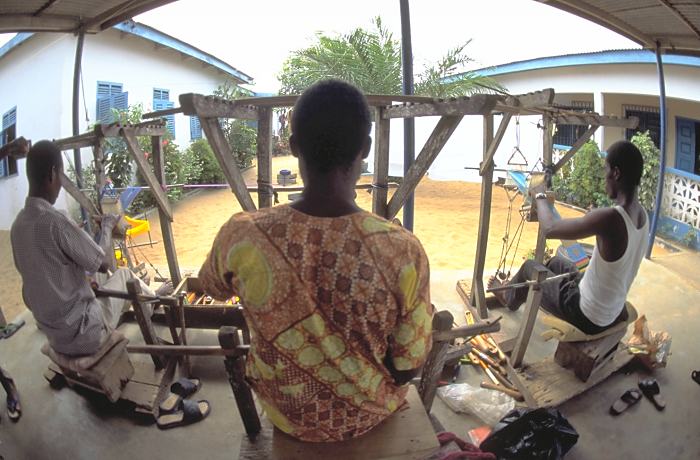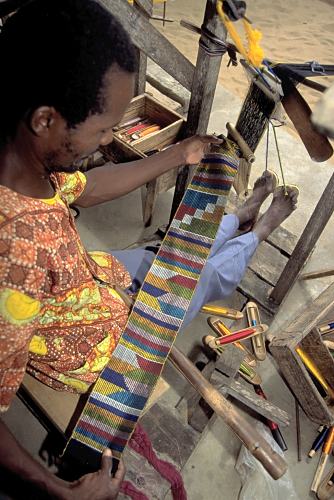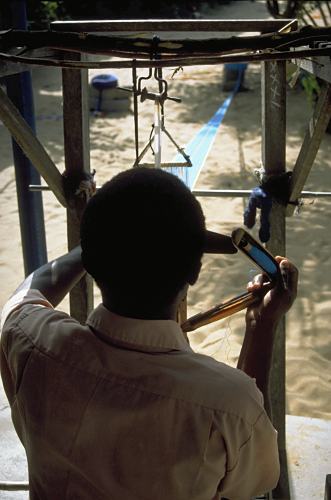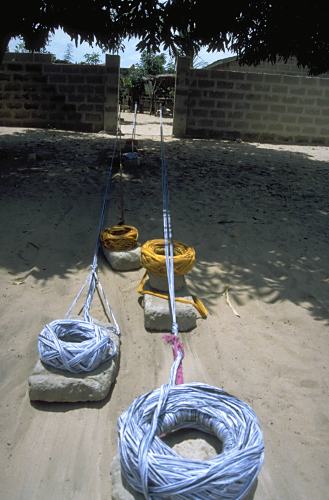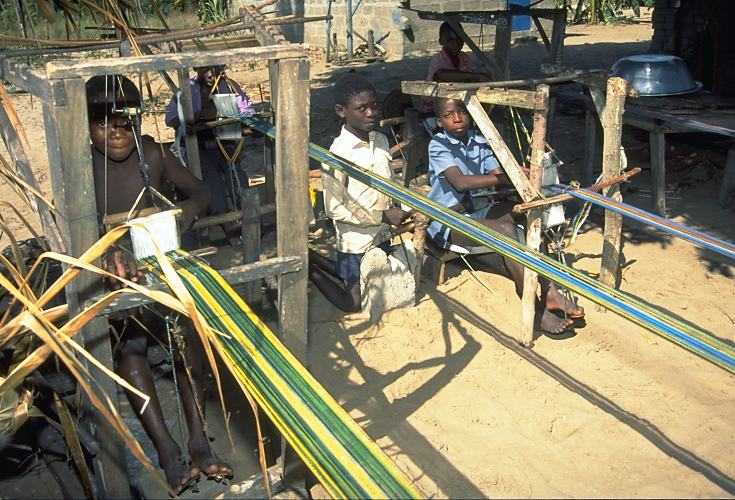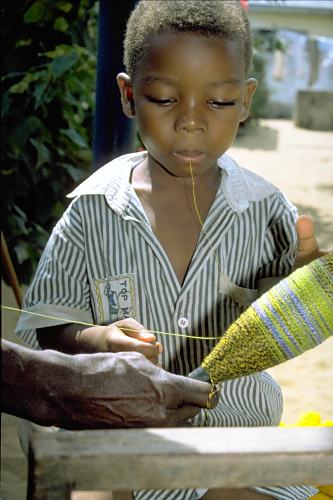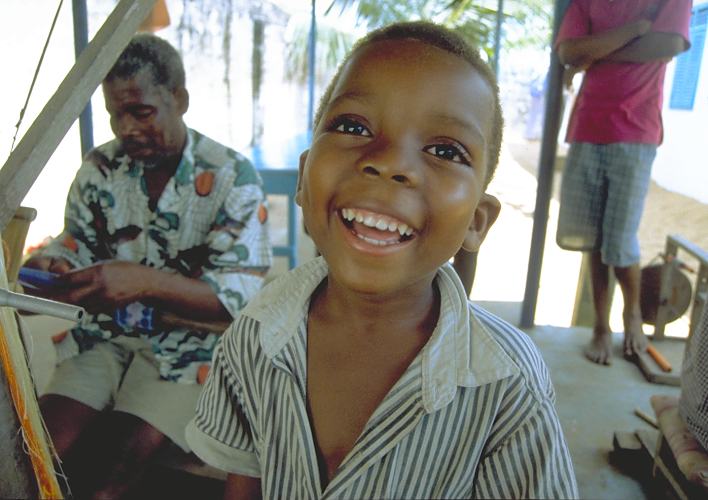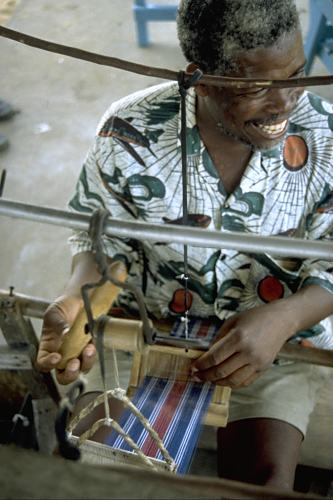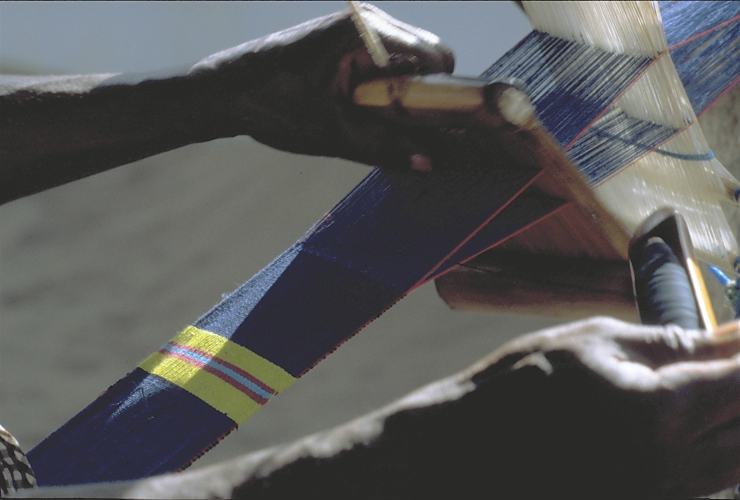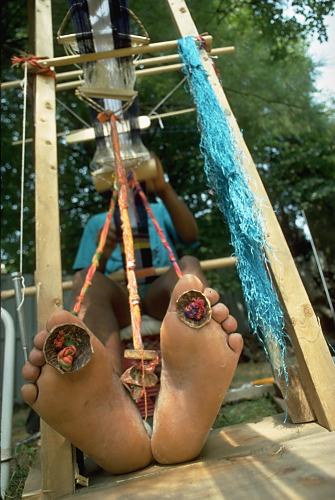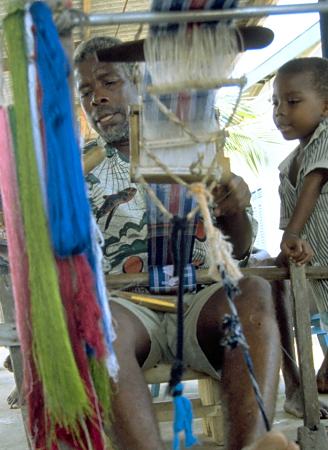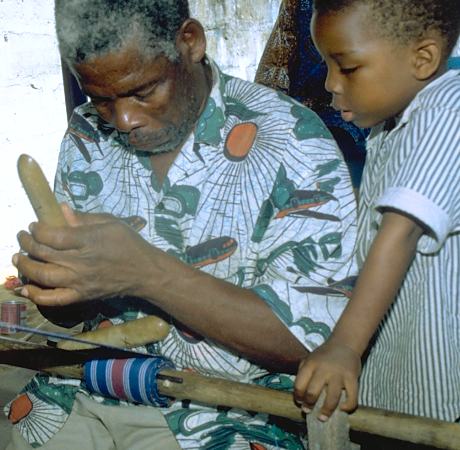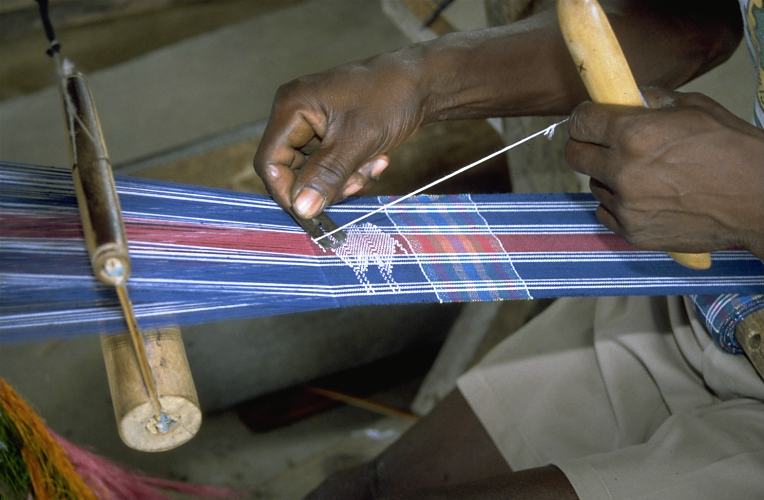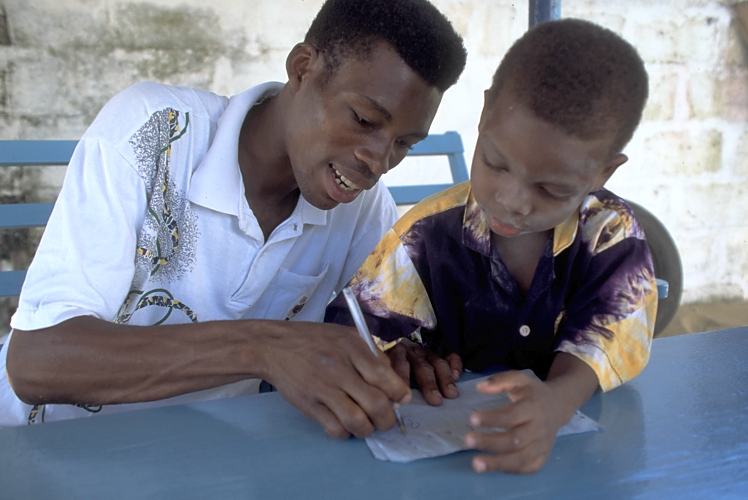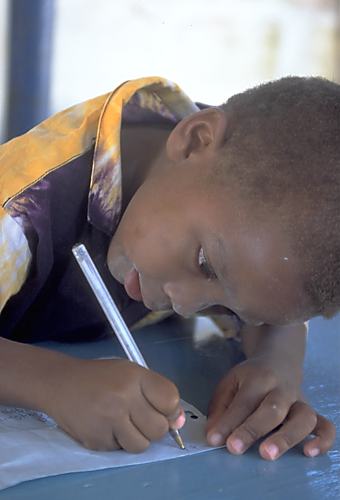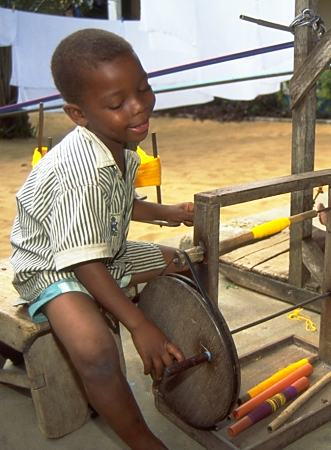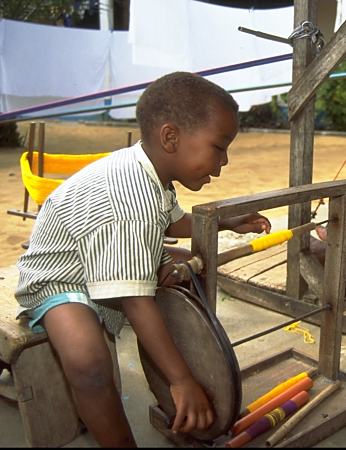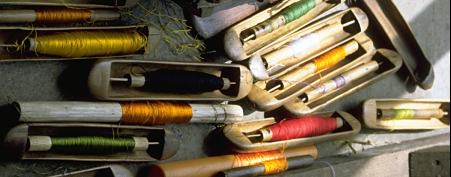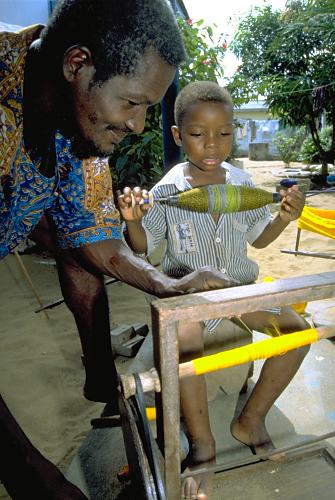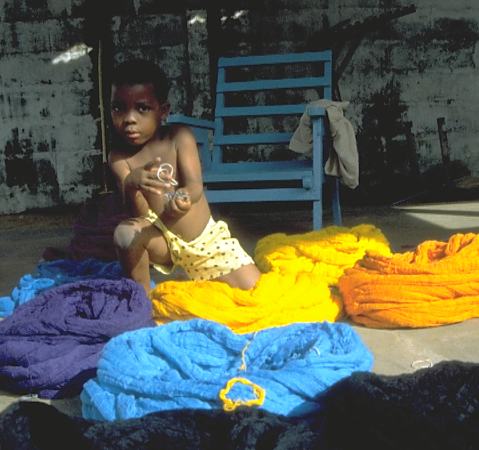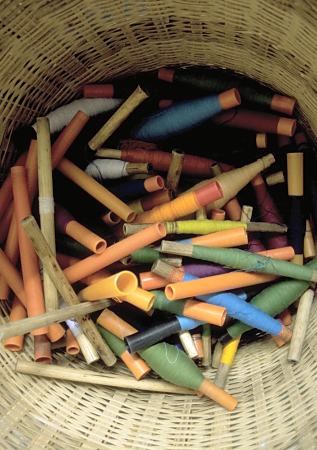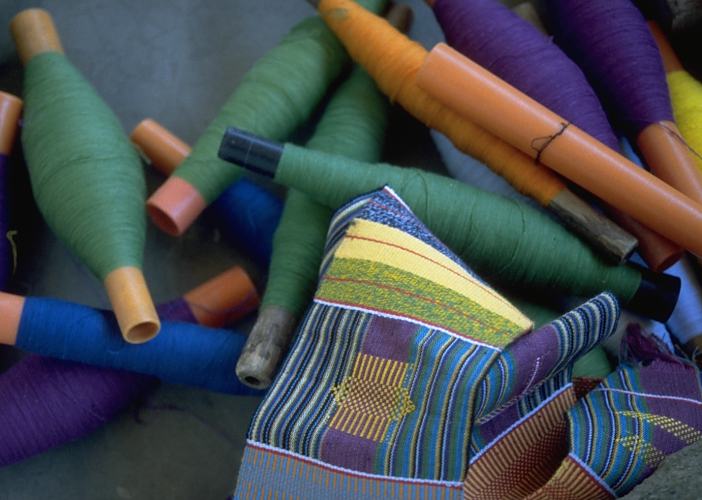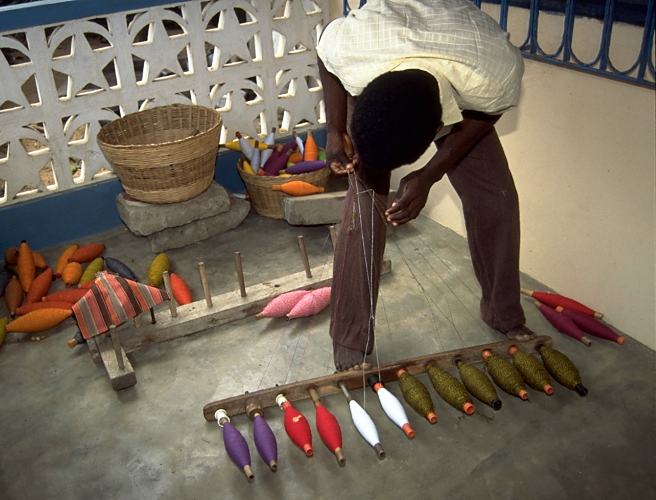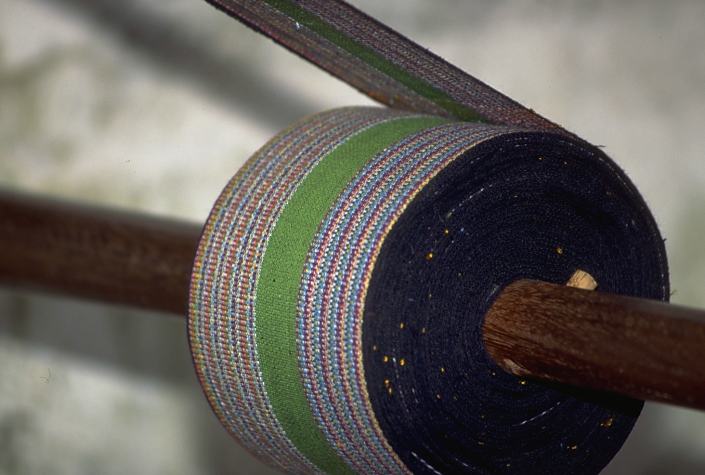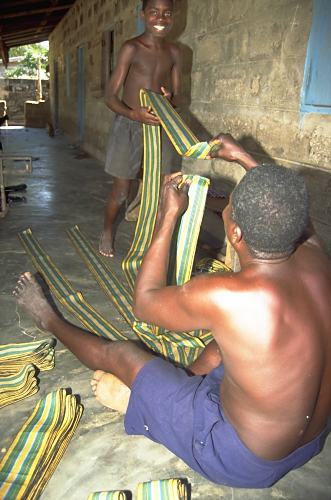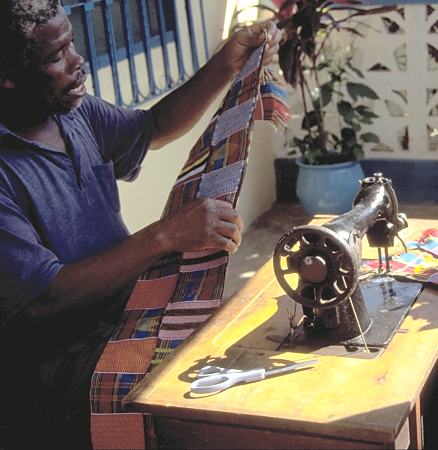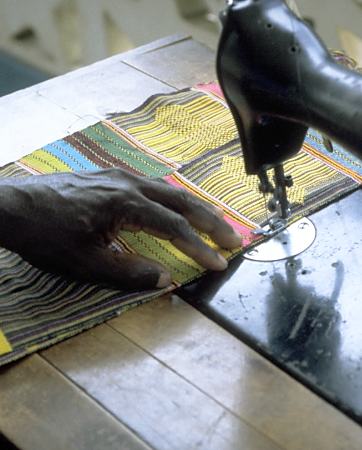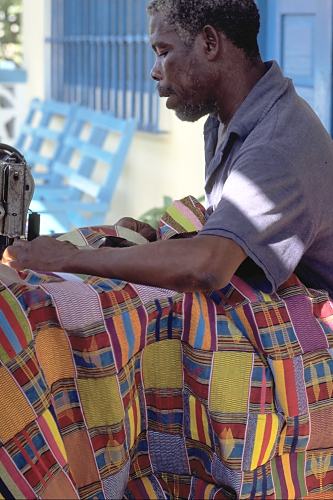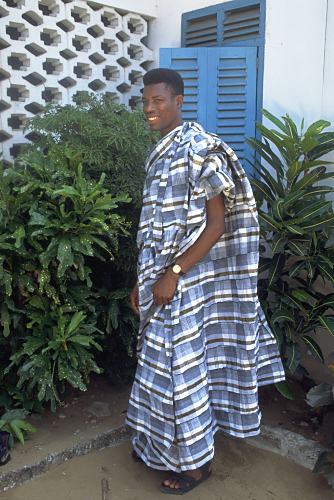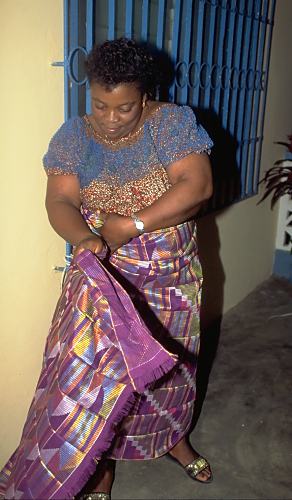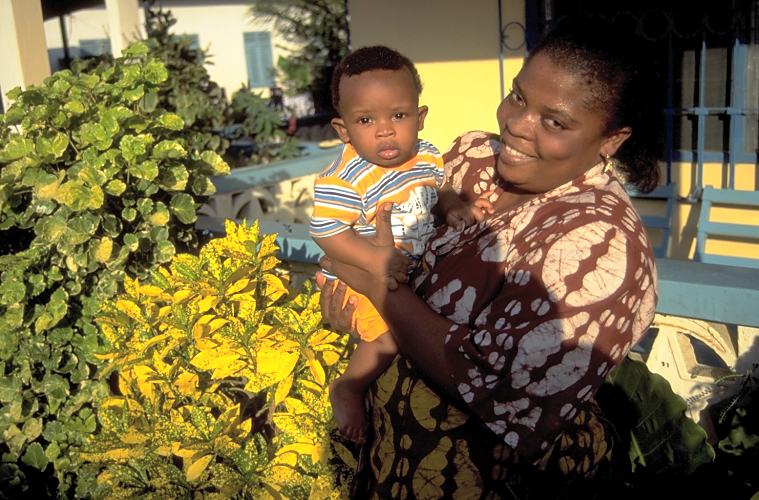Master Weaver from Ghana, by Louise Meyer
Ghana is famous for its weavers of Kente cloth. Kente cloth is made from threads of different colors. The weaver used red, green, yellow and black threads to weave this strip of cloth.
Weavers work together at their looms outside on the compound near their houses. Weaving from sunrise to sunset has been the tradition of their families for hundreds of years.
This strip of Kente cloth is one of the most beautiful. It is called "worgagba" which means "corn power". Corn is such an important food that Kente cloth is named after it!
At one end the long warp threads stretch from the loom where the weaver sits far, far away into the distance. The loom is made from wood and it holds the threads straight and keeps them in order. The loom is the weavers' most important tool and he asks the God of the loom for inspiration every day to help him weave good Kente cloth.
At the other end the warps are rolled up into neat circles of thread, where they rest on heavy stones. The weaver drags these heavy stones towards him as he weaves.
By age twelve most boys begin helping their fathers by weaving Kente cloth after school.
Kweku is four years old. He lives in Denu with his family. His father, uncles and older brothers all weave Kente cloth.
His father, Gilbert Bobbo Ahiagble, is a master weaver. He is in charge of the family's weaving business. Kweku is always ready to help his father.
Bobbo laughs and jokes while working hard all day. He loves weaving more than anything else in the world.
The shuttle flys back and forth from one hand to the other passing between the long warp threads, which the weaver open by ...
... Alternately pulling on two strings with his feet.
Kweku watches every motion. Bobbo pulls a piece of white silk thread from the bundle hanging on his loom. He uses it to weave a picture into the Kente cloth strip he is making.
He puts an animal pattern into the strip of cloth. He tells Kweku the story of the goat he just wove. Every pattern in Kente cloth has its own story
His oldest brother, Kwame, shows him how to write the word goat.
Kweku practices writing the word "goat", then parrot, lion, elephant and butterfly which are all names of patterns woven into Kente cloth. Each one has its own story. Kente cloth is like a story book, but its cloth.
Kweku knows how to wind the thread onto bobbins on the bobbin-winder.
Today he is learning how to wind thread onto bigger bobbins.
Kweku worked all day winding thread onto enough bobbins to fill this basket.
Loose thread is wrapped around bobbins before it is woven into strips of Kente cloth.
Twelve big bobbins, six green ones, two white, two red and two purple are put onto a bobbin holder, used to measure and stretch the warp threads, numbering over two hundred.
As the weaver works the Kente cloth rolls up on the loom's cross beam.
Then it is unrolled and cut into enough strips of the same length to be joined together into a broad cloth, sometimes as large as twelve feet in width.
A minimum of 9 to 11 strips are sewn together to make a wrapper worn as a skirt by a young woman.
When the Kente cloth strips are sewn together it does not look like strips anymore.
Kweku's brother Kwame is a very good weaver! He is wearing a beautiful Kente cloth wrapper he wove and sewed himself. It is made from 19 strips! It makes him look like a king!
His mother, Celestine, is putting on a new wrapper that Bobbo wove to thank her for giving him a new son - a future weaver!
Kweku, no longer the youngest, has a new baby brother, who will follow in his 'big' brother's footsteps.
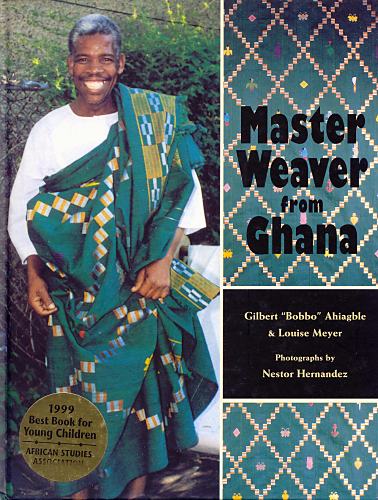
Written by Louise Meyer and Gilbert "Bobbo" Ahiagble with photographs by Nestor Hernandez. This was the first draft of the children's book "Master weaver from Ghana".
Louise had placed this first version online, to gauge interest and get feedback. She was quite pleased with viewer's reactions, which encouraged her to work further on the book, then published in 1998 by Open Hand.
